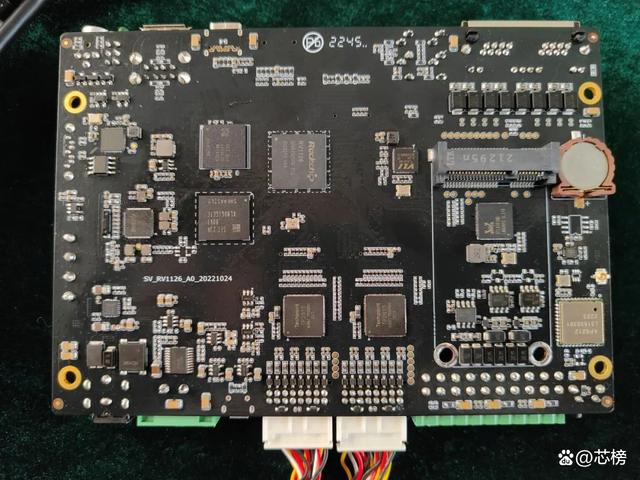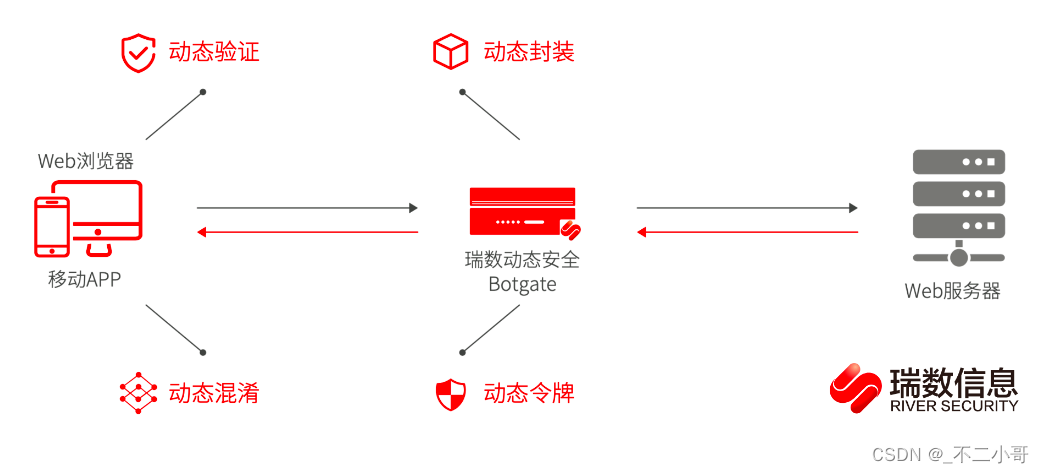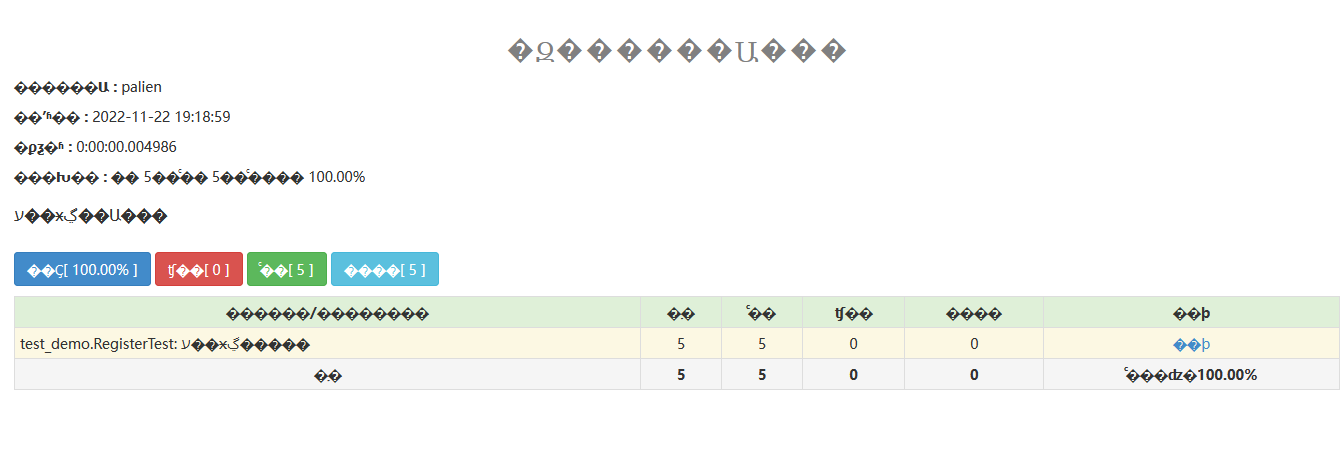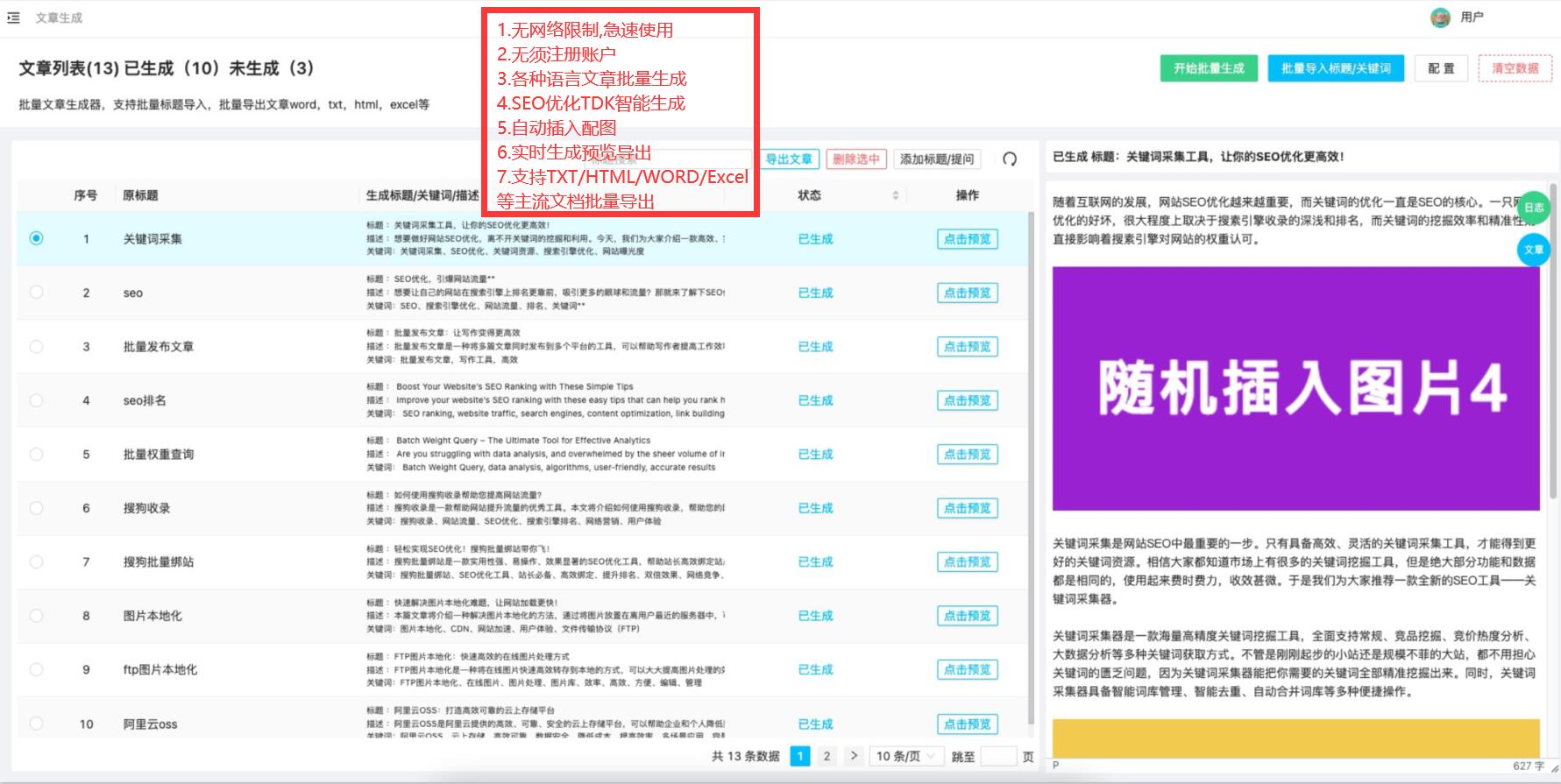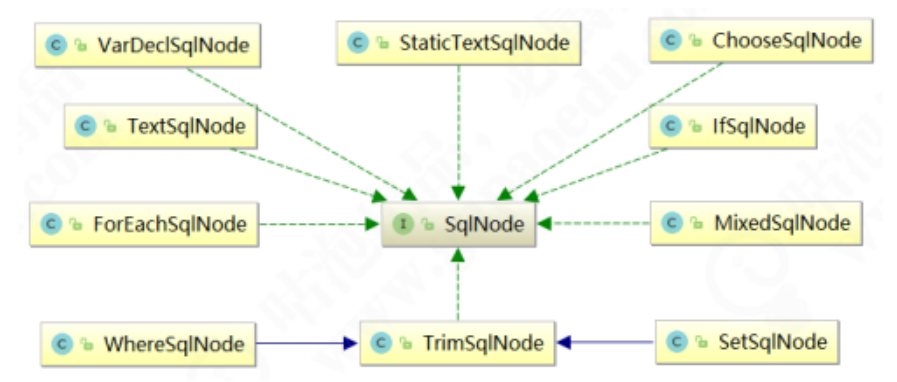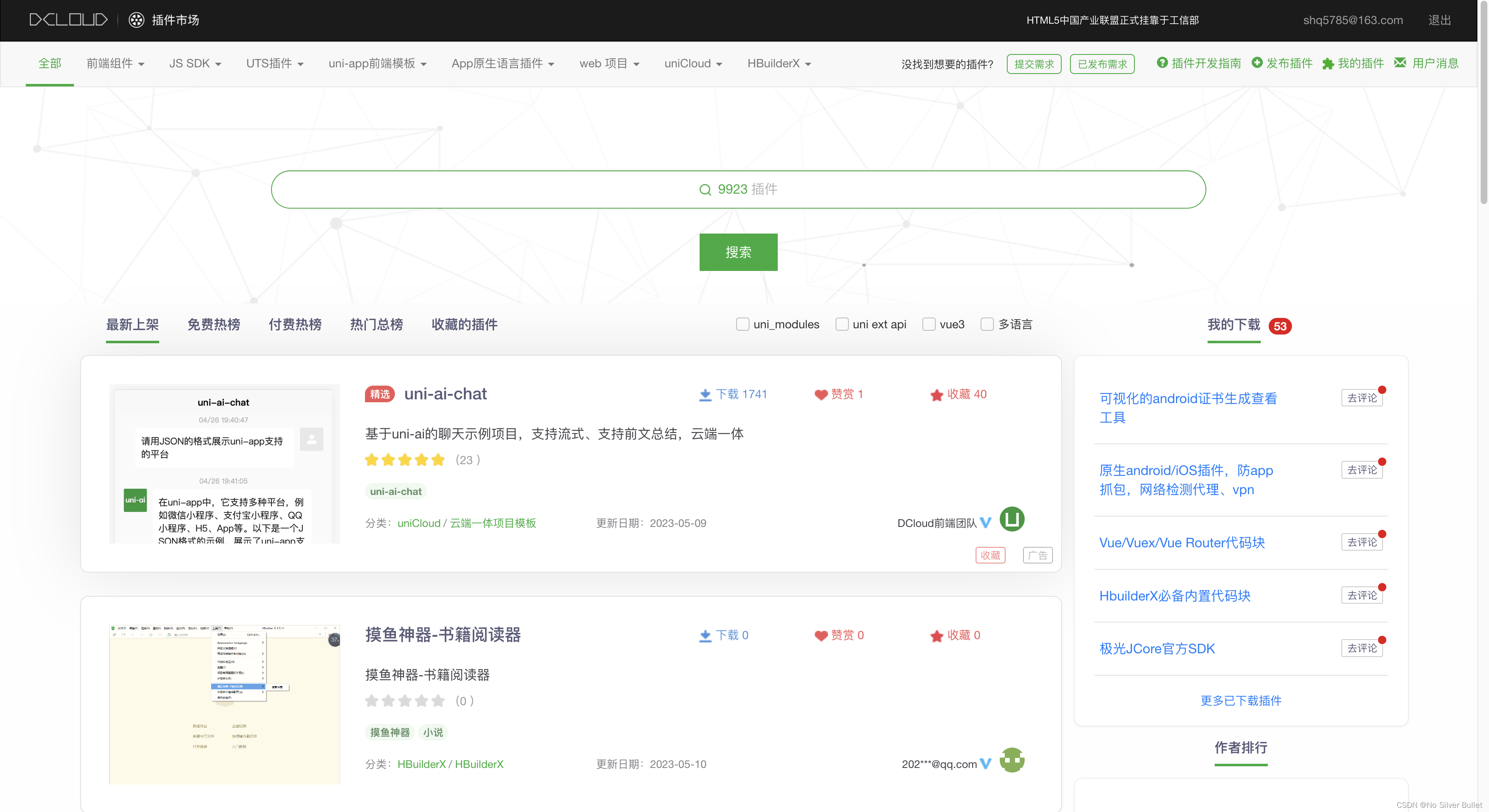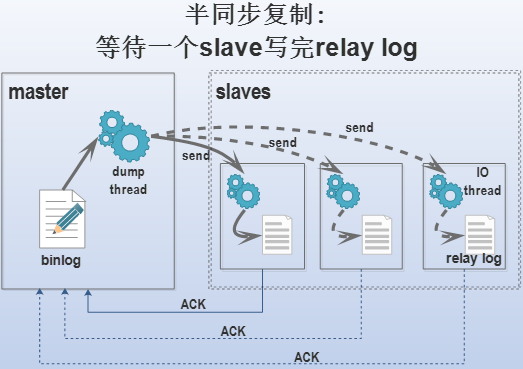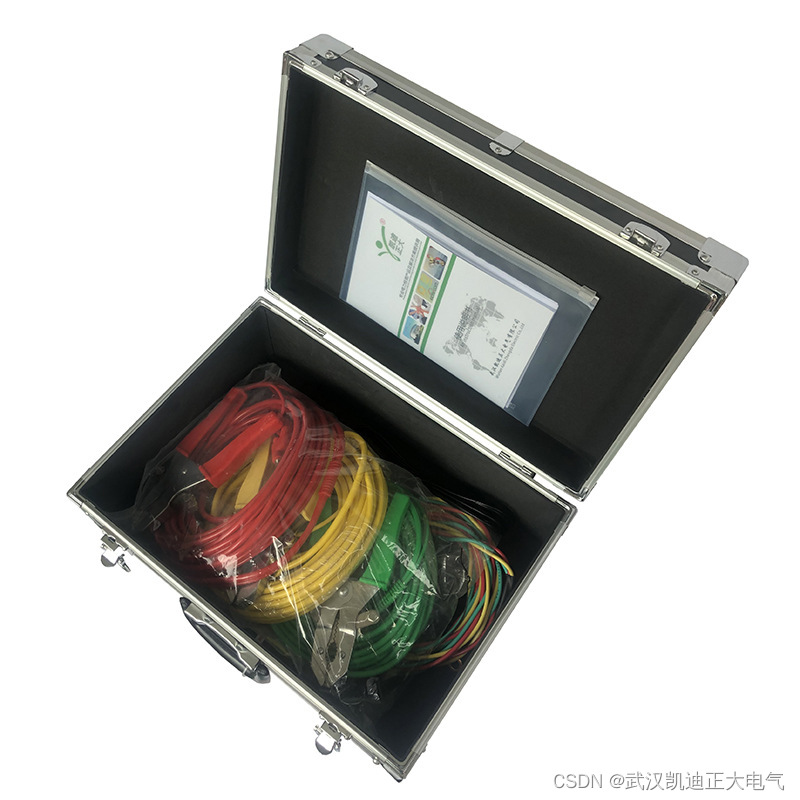一、vue组件挂载
1.1 上一篇文章中,介绍到组件执行 mountComponent 函数,本文对此展开详细的讲解。
1.2 调用改方法的位置在于entry-runtime-with-compiler.js 的Vue.prototype.$mount,具体代码如下:
其中,
(1)el 是 实例化中,传入构造函数的el 选项,且options.render 的值不存在
(2)如果构造函数中,传入了template 选项,则template 的值就是把这个值处理成对应的template。
(3)如果template 不存在,其次会判断el 选项是否存在,如果存在,则根据文档文字,找到指定的标签包裹的HTML,作为template。
(4)以上方法在实例化 vue 中,存在el 选项的情况下执行,如果我们在开发过程中,没有使用这样方式创建,而是创建完之后,再挂载,也是可以的,这样就是用户手动触发该挂载函数,
Vue.prototype.$mount = function (
el?: string | Element,
hydrating?: boolean
): Component {
debugger
el = el && query(el)
//执行$mount 函数,会判断是否存在render 函数,不存在在则将template编译成渲染函数,把render赋值为改渲染函数
const options = this.$options
// resolve template/el and convert to render function
if (!options.render) {
let template = options.template
if (template) {
if (typeof template === 'string') {
if (template.charAt(0) === '#') {
template = idToTemplate(template)
/* istanbul ignore if */
}
} else if (template.nodeType) {
template = template.innerHTML
} else {
return this
}
} else if (el) {
template = getOuterHTML(el)
}
if (template) {
/* istanbul ignore if */
const { render, staticRenderFns } = compileToFunctions(template, {
outputSourceRange: process.env.NODE_ENV !== 'production',
shouldDecodeNewlines,
shouldDecodeNewlinesForHref,
delimiters: options.delimiters,
comments: options.comments
}, this)
options.render = render
options.staticRenderFns = staticRenderFns
}
}
return mount.call(this, el, hydrating)
}
1.3 代码的解释可以对应到vue官网的生命周期示例图
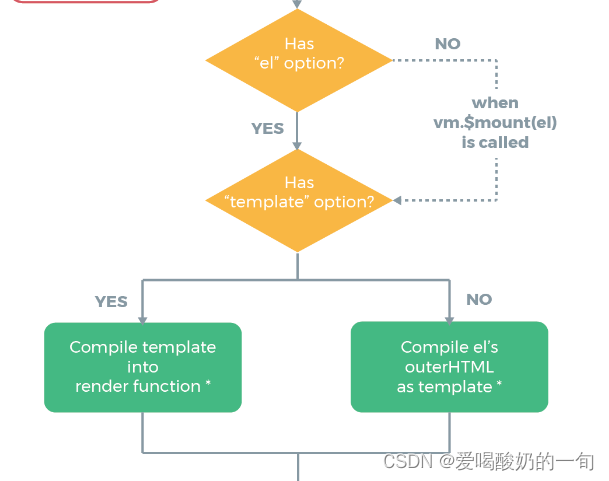
1.4 是否存在el 的选项,实际上是在 init 函数的时候判断的,代码如下:
//文件位置 src/core/instance/init.js
if (vm.$options.el) {
vm.$mount(vm.$options.el)
}
1.5 挂载vue 的两种方式如下:
(1)用户手动触发 挂载函数,就是对于上图的对应的没有el 选项的情况
const app= new Vue();
app.$mount('.todoapp')
(2)实例化过程传入el选项
const app= new Vue({el:".todoapp"});
这两种方式实际上都会调用同一个方法,就是上面说的挂载函数,还会执行同样的判断逻辑。
二、模板 template 编译生成抽象语法树ast与渲染函数render生成
2.1 在我们实际过程中,我们把vue 的模板语法写到HTML 文件中,这样,如果没有经过特殊处理,浏览器都会把他们当做普通的文本处理,不会显示成我们想要的效果,那么,这一个步骤究竟是怎么实现的,下面我就带大家深入vue的模板编译。
2.2 在 一 中,介绍了template如何获取,那么下面就针对其接下来的要做的工作展开剖析,下一步代码如下:
将 获取到的template 传入 compileToFunctions 函数中 ,得到一个 render 和 staticRenderFns ,
然后将其赋值给 options,这个options 实际上就是指向 构造函数的参数对象
const { render, staticRenderFns } = compileToFunctions(template, {
outputSourceRange: process.env.NODE_ENV !== 'production',
shouldDecodeNewlines,
shouldDecodeNewlinesForHref,
delimiters: options.delimiters,
comments: options.comments
}, this)
options.render = render
options.staticRenderFns = staticRenderFns
2.3 那么这个compileToFunctions 函数到底做了什么,其代码如下:
export const createCompiler = createCompilerCreator(function baseCompile (
template: string,
options: CompilerOptions
): CompiledResult {
debugger
const ast = parse(template.trim(), options)
if (options.optimize !== false) {
optimize(ast, options)
}
const code = generate(ast, options)
return {
ast,
render: code.render,
staticRenderFns: code.staticRenderFns
}
})
2.4 其中,parse() 函数,是将template 编译成抽象语法树,其实际上就是一个对象,根据文档的嵌套结构,使用js 对象和其属性,模拟出来的一个表达其文档信息的对象,如下图所示:

2.5 得到抽象语法树之后,调用 generate(ast, options) 方法,把抽象语法树,作为参数,生成一个 code对象 ,code 具体样子如下:
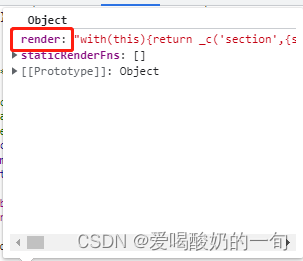
2.6 其中code对象 render 值,就是一个函数,这个函数其实就是生成一个虚拟DOM 的函数,后面会在 _render 函数中调用这个函数
三、虚拟DOM 与 渲染函数与视图更新
3.1 mountComponent 的代码如下:
其中定义一个 updateComponent 方法用于更新视图,里面调用了vm._render(), 这个方法就是调用了二中的 render 函数,生成一个虚拟DOM ,然后执行vm._update 方法渲染真实的dom。
其中updateComponent 方法触发的机制是 数据方式变化是,由Watcher 调用 updateComponent 方法更新视图
xport function mountComponent (
vm: Component,
el: ?Element,
hydrating?: boolean
): Component {
// debugger
vm.$el = el
callHook(vm, 'beforeMount')
let updateComponent
/* istanbul ignore if */
updateComponent = () => {
vm._update(vm._render(), hydrating)
}
new Watcher(vm, updateComponent, noop, {
before () {
if (vm._isMounted && !vm._isDestroyed) {
callHook(vm, 'beforeUpdate')
}
}
}, true /* isRenderWatcher */)
hydrating = false
// manually mounted instance, call mounted on self
// mounted is called for render-created child components in its inserted hook
if (vm.$vnode == null) {
vm._isMounted = true
callHook(vm, 'mounted')
}
return vm
3.2 vm._update 方法代码如下,其位置在src/core/instance/lifecycle 中,代码如下:
该方法 调用了patch 方法,进行新旧虚拟dom 的对比,然后更新视图,实现视图更新
Vue.prototype._update = function (vnode: VNode, hydrating?: boolean) {
const vm: Component = this
const prevEl = vm.$el
const prevVnode = vm._vnode
const restoreActiveInstance = setActiveInstance(vm)
vm._vnode = vnode
// Vue.prototype.__patch__ is injected in entry points
// based on the rendering backend used.
if (!prevVnode) {
// initial render
vm.$el = vm.__patch__(vm.$el, vnode, hydrating, false /* removeOnly */)
} else {
// updates
vm.$el = vm.__patch__(prevVnode, vnode)
}
restoreActiveInstance()
// update __vue__ reference
if (prevEl) {
prevEl.__vue__ = null
}
if (vm.$el) {
vm.$el.__vue__ = vm
}
// if parent is an HOC, update its $el as well
if (vm.$vnode && vm.$parent && vm.$vnode === vm.$parent._vnode) {
vm.$parent.$el = vm.$el
}
// updated hook is called by the scheduler to ensure that children are
// updated in a parent's updated hook.
}


